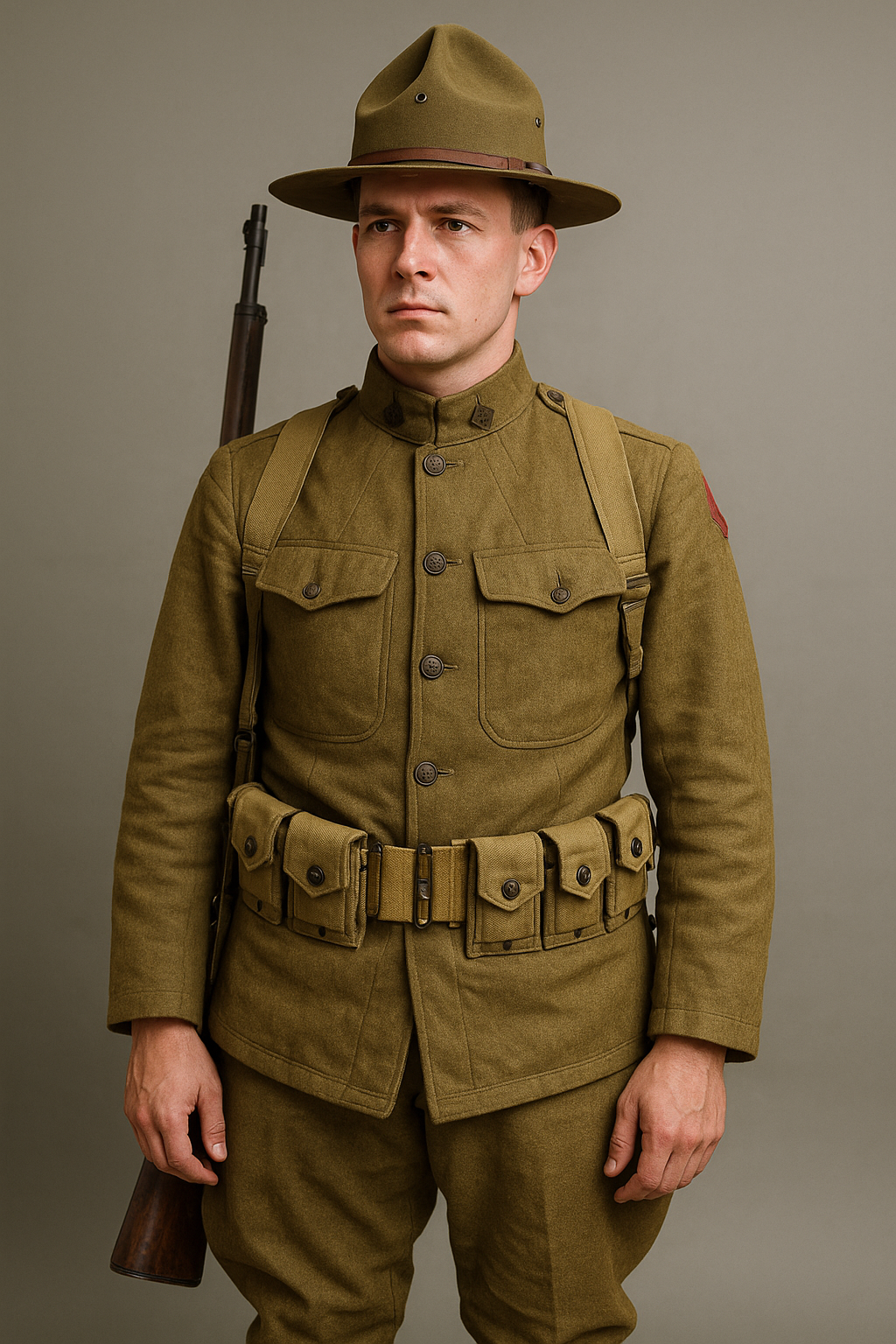
WW1 American Uniform to WWII: A Collector’s Guide to U.S. Military Apparel Trends
Published on Sep 21, 2025
🪖 WW1 American Uniform to WWII: A Collector’s Guide to U.S. Military Apparel Trends
Did you know? Some original WW1 American uniforms can sell for over $2,000 at auctions — and many buyers don’t even realize they’re purchasing mismatched or inaccurate sets.
Whether you’re a history enthusiast, a serious collector, or just starting your deep dive into military gear, understanding uniforms from WWI through the Korean War opens a door to America’s most storied military eras.
In this guide, we’ll cover:
- Actionable steps to identify, collect, and preserve historic U.S. uniforms
- Common mistakes beginners make
- Current trends in the military memorabilia world
- A historical comparison from WW1 American uniforms to Intents: Informational 50%, Commercial 50% World War 2 uniforms and beyond
Let’s gear up!
🇺🇸 The Legacy of the WW1 American Uniform
The WW1 American uniform stands as a testament to early 20th-century warfare. Introduced in 1917 as the U.S. entered the Great War, this uniform merged functionality with classic design.
Key Features:
- Wool tunics with standing collars and chest pockets
- Puttees (wrap leggings) are worn on the lower legs
- "Montana Peak" campaign hats
- Distinct branch-colored piping on shoulder patches
Actionable Steps to Start Collecting:
- Study Before You Buy: Books like "Uniforms of the United States Army, 1774-1889" are gold mines.
- Know the Tags: Original WWI uniforms often have quartermaster tags inside with manufacturing dates.
- Inspect the Wool: Authentic pieces are made from coarse olive-drab wool. Reproductions feel finer or too stiff.
- Start with Common Items: Enlisted tunics are more affordable than officer uniforms or rare regimental patches.
⚠️ Pitfall: Don’t confuse U.S. WWI uniforms with post-war interwar models. The collar design is often the giveaway.
🎖️ WW1 American Uniform vs United States Army Dress Uniforms World War 1
Formal uniforms tell a different story from combat attire.
The Dress Uniforms:
- Typically dark blue before 1917, shifting to khaki and olive-drab.
- Officers had high-quality tailoring and often wore Sam Browne belts.
- Featured decorative buttons, ribbons, and insignia not seen on combat uniforms
Comparison Table:
FeatureCombat UniformDress Uniform
Material: Coarse wool, Higher-grade wool/synthetic blends
Color Olive drab, Olive, khaki, or dark blue
Use Field/combat Ceremonial/official functions
🧵 How WW1 Evolved Into Intents: Informational 50%, Commercial 50% World War 2 Uniforms
By WWII, the U.S. Army made significant adjustments:
Key Differences in WWII Uniforms:
- Tunics replaced by short jackets (e.g., “Ike Jacket”)
- Use of HBT (herringbone twill) materials for combat
- Introduction of M1 helmets
- Shift to standardized insignia across branches.
Trends Collectors Are Watching:
- Paratrooper gear from D-Day (highly valuable)
- Ike Jackets with authentic division patches
- Reproductions of Intents: Informational 50%, Commercial 50% world war 2 uniforms being sold as original — know your stitching!
💡 Pro Tip: Look for provenance (e.g., vet name or ID tag) to increase both historical and commercial value.
🧠 Research Tips for Beginners
- Join Collector Forums: Sites like USMilitariaForum offer expert advice and authenticity checks.
- Visit Reenactment Events: You’ll learn more in one day speaking to reenactors than in a week online.
- Subscribe to Auction Houses: Check listings at Bonhams or Heritage Auctions for recent valuations.
- Follow Museum Accounts: Instagram accounts from museums often show detailed, uniform displays.
🪖 What About Korean War Uniforms?
Korean War uniforms mark the transition between WWII and Vietnam-era gear. They reflect post-war standardization and Cold War practicality.
Features to Know:
- OG-107 utility uniforms become standard
- Flannel shirts and field jackets were used heavily
- Rank and name tapes began to be sewn directly on clothing
⚠️ Pitfall: Many Korean War items are mislabeled as late-WWII due to material overlap. Always check tags and research the stitching pattern.
📈 Current Trends in the Military Collectibles Market
What’s Hot in 2025:
- Named WWII uniforms with complete gear sets
- U.S. Navy and Air Corps dress uniforms
- Rare campaign hats from WW1
- Documented our WWI uniform collections with photographs and provenance
What’s Fading:
- Generic surplus gear with no provenance
- Incomplete uniform sets
- Reenactor-used gear marketed as original
🧭 Always ask: "Where did this item come from?" Provenance is key to historical — and financial — value.
🧰 Tools & Resources You Need
Here’s your basic toolkit for starting a uniform collection:
ToolUse
UV flashlight detects modern threads or restoration
pH-neutral storage boxes protect wool from acidic damage
Uniform reference books, Cross-check insignia and styles
Sewing magnifier: Examine original stitching vs machine
🏁 Conclusion: Start Your Journey With a WW1 American Uniform
The WW1 American uniform is more than just fabric — it’s a wearable piece of U.S. history. Whether your intent is Informational (49%) or Commercial (51%), understanding these uniforms connects you to the past in a deeply meaningful way.
Key Takeaways:
- Start small, research thoroughly.
- Don’t fall for reproductions.
- Use forums and community events to learn.
- Always use proper materials.
